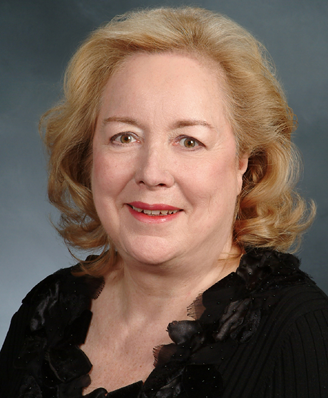CT Screening Now Standard for Those at High Risk for Lung Cancer
In this podcast ahead of the 2015 ASCO Annual Meeting, we discuss CT screening for individuals with a high risk for lung cancer with Claudia I. Henschke, MD, PhD.
Claudia I. Henschke, MD, PhD

As part of our coverage of the 2015 American Society of Clinical Oncology (ASCO) Annual Meeting held May 29 to June 2 in Chicago, we are speaking with Claudia I. Henschke, MD, PhD, a professor of radiology at Icahn School of Medicine at Mount Sinai. At this year’s meeting, Dr. Henschke will be chairing an education session discussing lung cancer screening and surveillance.
-Interviewed by Leah Lawrence
Cancer Network: Dr. Henschke, thank you for taking the time to speak with us today.
Dr. Henschke: I look forward to talking to you.
Cancer Network: Anyone involved in the treatment of cancer knows that cancer prevention and early detection are the best ways to prevent death. Provide us a little background about the need for effective screening strategies for lung cancer.
Dr. Henschke: Thank you for that question. An effective screening strategy is one where you find the cancer early and you can treat it. Early treatment has higher cure rate. Those are the key things.
With CT screening for lung cancer, we showed that you could find it early enough to have an effective treatment, typically by surgery, but there can also be alternative treatments that are being developed such as stereotactic body radiation. Those treatments are very effective. They have a high cure rate.
Cancer Network: Lung cancer screening has been in the news a lot lately. What is the most up-to-date data on the efficacy of screening and what are the current recommendations?
Dr. Henschke: CT screening was introduced in the early 1990s when for the first time you could obtain a CT scan of the entire chest in a single breath. At that time, it was studied and we found you could find the lung cancer early. In fact, more than 80% of the lung cancers detected were early lung cancers. Therefore, that stimulated the National Cancer Institute to start the National Lung Screening Trial, or NLST for short.
That trial was designed to show a mortality reduction of at least 20% because if the mortality reduction was 20% or more that was high enough to recommend CT screening. That is what happened. The National Cancer Institute instituted the trial based on our initial data published in the Lancet. The results of the trial showed that CT screening saved lives. For that reason the US Preventive Services Task Force recommended that CT screening be provided to high-risk individuals.
Cancer Network: Is there any additional ongoing research looking into lung cancer screening methods that are highly anticipated?
Dr. Henschke: The question now is how to do it efficiently in a cost-effective way, and so it is the implementation that is the key question. There are studies that are coming out on how to do it more efficiently. Clearly, you have to have a multidisciplinary group that is involved in the screening program. You have to have a regimen of screening or a process of screening that is done in a well-documented way using the latest information. You also want to include smoking cessation advice with the screening program because clearly it has been shown that if you stop smoking your chances of lung cancer decrease, and if you are shown to have lung cancer in its early stage you will do much better if you stop smoking.
Cancer Network: Sum it all up for our readers, where does lung cancer screening stand as of right now?
Dr. Henschke: Because of the US Preventive Services Task Force, all commercial insurers were mandated to start providing CT screening for lung cancer to high-risk people, 55 and older, who have smoked at least 30 pack-years and who quit within the last 15 years. In addition, Medicare has now decided to also cover CT screening for lung cancer for people who are 55 and older, but for the most part people covered by Medicare are 65 and older, with the same criteria. Those who have 30 pack-years of smoking history and who quit within the last 15 years go from 55 to 78 years of age.
We hope that this is the beginning of what will be covered. We think that once it has been implemented, and it has been shown already to be cost-effective, that the criteria will be further developed and be enlarged to incorporate other people who are at high risk for lung cancer.
Cancer Network: Great! Thank you for taking the time to talk to us and provide this great summary of the current status of lung cancer screening.
Dr. Henschke: Thank you for the opportunity. It is an important message to get out to people who are at risk for lung cancer-that they should really talk to their physician about CT screening for lung cancer.
Neoadjuvant Capecitabine Plus Temozolomide in Atypical Lung NETs
Read about a woman with well-differentiated atypical carcinoid who experienced a 21% regression in primary tumor size after 12 months on neoadjuvant capecitabine and temozolomide.